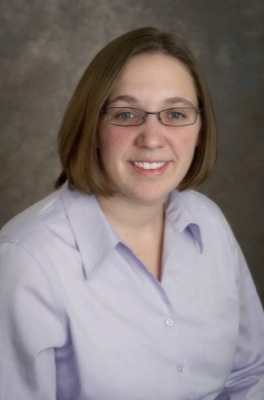
Comparative pathology
UD interactive conference highlights diagnostic, research benefits of digital pathology
9:16 a.m., Oct. 3, 2012--With researchers from throughout the world collaborating on projects, the need to share and analyze tissue specimens remotely in real-time is ever present. To preview technology which can help meet that need, the University of Delaware College of Agriculture and Natural Resources’ Comparative Pathology Laboratory hosted “Introduction to Digital Pathology” demonstrations Sept. 6-7 at the Charles C. Allen Laboratory Conference Room.
Conference participants experienced digital pathology, or ePathology, technology firsthand through live demonstrations of slide scanning quantitative image analysis and real-time conferencing on virtual slides without a microscope.
Research Stories
Chronic wounds
Prof. Heck's legacy
Erin Brannick, assistant professor in the Department of Animal and Food Sciences, director of the CANR Comparative Pathology Laboratory and a veterinary pathologist, organized the conference with representatives from Aperio, a company specializing in digital pathology slide scanners, analysis software, and data management systems.
Digital pathology systems have many applications, and Brannick explained that during the sessions, participants were able to see how one Aperio system could meet the diverse needs of researchers, diagnosticians in human and veterinary medicine, educators and industry partners.
Multiple research application sessions offered individual researchers the chance to create and analyze virtual slides of their own research specimens. The bovine hoof and rumen, marine animal eyes and fungal organisms were among the images scanned on-site for attendees by a machine that can accommodate up to 400 glass slides at a time. Participants could then observe the virtual tissues across magnifications from a whole slide view up to 40x magnification, either on the attached monitor or on one of several laptop computers in the room.
Aperio representatives also demonstrated specific features of Genie, image analysis software that can be trained to meet the individual needs of a user. Once trained, a Genie analysis template can be applied to all virtual slides in a research study simultaneously, minimizing viewer subjectivity and lengthy time requirements typical for manual slide review by an individual researcher.
On the morning of Thursday, Sept. 6, a diagnostic applications conference was held in which diagnosticians from the UD Allen and CANR Comparative Pathology laboratories on Newark campus were able to interface with veterinary diagnosticians from Delaware and Maryland at the Lasher Laboratory in Georgetown, Del., as they held their monthly diagnostic conference. The ability to connect via computer to examine the same slides remotely in real-time is a function that Brannick said could be very beneficial to both diagnosticians and researchers. “Because our groups are so spread apart, it would be nice if we were to get this system on board to be able to conference directly using virtual slides,” she said.
The groups briefly learned about the digital pathology equipment through a standard videoconference, then held a consultation on their diagnostic cases using remotely-linked computers and digital slide images that had been uploaded to Aperio’s servers in California. “I was able to share cases remotely and show participants directly what the lesions were and what I was seeing that helped me make my diagnosis,” said Brannick.
Participants at both locations could take turns analyzing disease lesions at multiple magnifications while discussing details of the case. “We could give Lasher laboratory participants control and they could drive the slide and ask questions,” she said. Despite streaming data from servers across the country, the images uploaded with minimal delay, projected crisply, and maneuvered easily, even for first-time system users.
The diagnostic applications conference was also a first for the Aperio representatives. While remote slide conferencing is a common use for the Aperio imaging system, the UD conference marked the first time the representatives were able to fully demonstrate the intuitive ease of digital conferencing before actually installing a system at a university. “The representatives tell people how to set remote conferencing up all the time but to actually get to do it too was a lot of fun for them,” said Brannick.
As for a teaching tool, Brannick brought the undergraduate and graduate students in her animal histology class in to try the Aperio system to demonstrate to other educators in attendance how beneficial it can be when an entire class can look at the exact same specimen on computer screens as opposed to a variety of samples under individual microscopes.
“If you were to use digital pathology in a lab setting, you could actually have a computer lab where everyone gets the same electronic slide set and then students pull up image after image. You can directly talk with students and guide them as a class through an image,” said Brannick. “Then you could turn control over to the students and have them drive around and show others what they’re looking at and what they see. So that’s a real strength of this system.”
Brannick is now looking to move forward, trying to bring the Aperio brightfield and/or fluorescence digital imaging system to UD on a full-time basis. “We really feel like it will greatly benefit all of these aspects for UD: the research, the teaching and the diagnostics.”
For more information about the Aperio digital pathology technology, contact Erin Brannick at 831-1342.
Article by Adam Thomas








